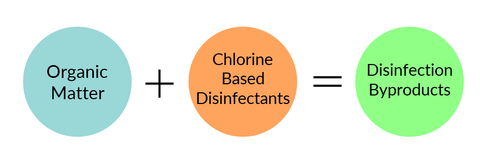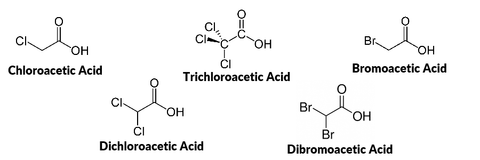Water Quality InformationWritten By Actual Experts
RSSHard Water: What You Need To Know

Disinfection Byproducts In Drinking Water: Toxicity, History, and Policy
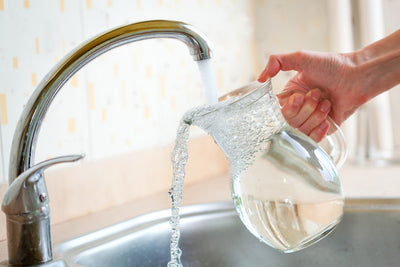
Disinfection byproducts are a class of contaminants that have been detected in drinking water throughout the country. Unlike things like arsenic and lead, most people are not familiar with disinfection byproducts. The goal of this article is to dive deep into the chemistry, history and policy surrounding disinfection byproducts.
What Are Disinfection Byproducts?
Water disinfection was an extremely successful public health accomplishment. It's the main reason why waterborne illnesses are not a persistent threat in United States tap water. However, adding chlorine-based disinfectants to water can have harmful unintended consequences, one of which being that they can react with other things found in tap water (e.g. organic matter) and form a class of halogenated chemicals known as "disinfection byproducts." Disinfection byproducts are generally regarded as an "emerging contaminant", because despite having identified more than 600 different disinfection byproducts, roughly 50% are still unaccounted for.
Why Do We Care About Disinfection Byproducts?
Many halogenated organic compounds are known carcinogens in humans (e.g. dioxin, DDT, Carbon Tetrachloride, PCBs), so they rightfully receive quite a bit of scrutiny when detected in tap water. While some disinfection byproducts in water have almost no toxicity, others have been associated with cancer, reproductive problems, and developmental issues in laboratory animals. Some population-scale epidemiology studies have also found an association between chlorinated tap water and these same problems in humans. Because more than 200 million people in the US use chlorinated tap water as the primary drinking water source, it’s something worth taking a very close look at.
How Are Disinfection Byproducts Regulated?
History Of Disinfection Byproduct Regulation
In 1974, trihalomethanes were detected in drinking water and linked to chlorine based disinfectants that were added to municipal tap water. Around the same time, the National Cancer Institute classified trihalomethanes as human carcinogens, and as a result, EPA established a drinking water standard for trihalomethanes in 1979. As more was learned about disinfection byproducts in water, the US EPA and other government, public health, and industry stakeholders began negotiating 2 stages of more comprehensive regulations in the mid-1990s. Stage 1, which was published in 1998 for 2002 compliance, ruled that haloacetic acids must also be monitored in tap water, in addition to trihalomethanes. The Stage 1 Rule also mandated that these chemicals be monitored throughout the entire water distribution system, not just a few predefined sampling locations. The results of the increased monitoring revealed that more municipalities were non-compliant than initially expected. Stage 2 of the regulation was published in 2006 (for 2012-2016 compliance), and further refined the sample collection strategy with the goal of protecting the public. In the future, most people expect that the regulations will continue to tighten as more about the long term effects of these chemicals becomes better understood, and the technologies that reduce their concentrations at the municipal level improve.
How To Know If A Municipality's Tap Water Has High Levels of Disinfection Byproducts
Overall, disinfectant byproduct concentrations are difficult to predict, because many factors influence their formation including: concentration of organic matter, chemical composition of the precursor materials, pH, temperature, type of disinfectant used, and the concentration of disinfectant. However, because monitoring for trihalomethanes and haloacetic acids are mandated by the EPA, the average concentrations found in the water supply must be made available to the public in annual drinking water reports.
Within a given municipal water system, different physical locations can have higher disinfection byproduct concentrations than others, based on where the home or business is located. This is because the longer it takes for the water to reach the home, the more opportunity there is for disinfection byproducts to form. Therefore, locations close to fast flowing water mains often have lower levels of disinfection byproducts than homes found at the periphery and low flow areas of the water distribution network. Additionally, disinfection byproduct concentrations can continue to rise in residential pipes/water tanks if the water remains stagnant for extended periods of time (e.g. during the work day, overnight). In fact, most municipalities recommend letting water run for 1-10 minutes before using it for drinking or cooking so pipes can flush out. (Obviously, nobody does this….)
What Are The Primary Ways That People Are Exposed To Disinfection Byproducts In The Home?
In the home, most people primarily use chlorinated tap water to drink, bathe, wash dishes, etc. A few studies have looked at the relative importance of the various exposure pathways, and found that showering contributed heavily to blood levels of trihalomethanes. While this may be initially surprising, it does make sense, because trihalomethanes can be volatilized in hot water and subsequently inhaled. During a shower, disinfection byproducts can also enter the body through absorption through the skin. Because most people come in contact with over 17 gallons of water in an “average” 8 minute shower, but drink less than a half-gallon of water each day, it makes sense that showering can be a major exposure path. Granted, this study only looked at the exposure route for one class of disinfection byproducts, but it does reveal that exposure pathways in addition to drinking, and is a great discovery to build upon with follow-up studies.
What Can Individuals Do To Reduce Their Exposure To Disinfection Byproducts?
To be clear, the discovery of DBP exposure through showering does NOT mean that you should be afraid of showering, rather it's a piece of information that may be considered in any changes to the regulation. As frustrating as it may be to people "looking for answers," the reality is... good science is a slow process... and modifications to regulations are often even slower! While regulatory agencies and municipalities are taking steps toward reducing DBPs in water (by pre-oxidizing or filtering out organic precursors), the most effective way for consumers to reduce their exposure today is by filtering their water at the point of use, and/or by flushing stagnant water out of the pipes by letting it run for a few minutes before using it.
Sources:
- https://www.epa.gov/ (and sources therein) Accessed on 12/25/2015
- https://www.cdc.gov/safewater/publications_pages/thm.pdf
- Backer, LC, et al., 2000
- Richardson et al., 2007
Other Great Articles From Water Smarts Magazine:
Fluoride and Tap Water: What You Need To Know
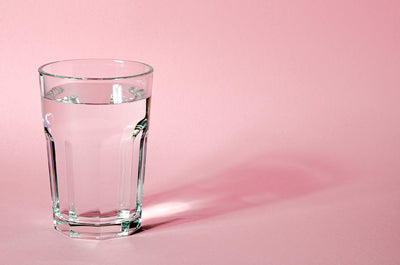
Eric Roy, Ph.D. | Scientific Founder
Since starting Hydroviv, the most heated questions that our support team receive often deal with the issue of fluoride in tap water, mostly due to the conflicting "information" found on the web. There are a lot of different factors that contribute to the “Fluoride Controversy” and the goal of this article is to lay out some historical context and give a non-exhaustive summary of the credible science.
Fluoride and Dental History:
The origin of fluoride in tap water can be traced back to the early 1900’s when a young dentist named Frederick McKay moved to Colorado Springs to open his first dental practice. One of his first observations upon arriving to Colorado Springs was that a large portion of the local population had unexplained heavy brown stains on their teeth. While the discolored teeth were unsightly, McKay also observed that they were unusually resistant to decay, and set out to figure out the cause. In 1931, after decades of persistent investigation, McKay and his collaborators discovered that the discoloration and resistance to decay were due to unusually high concentrations of fluoride in the local water supply.
In the 1930’s, water testing methodologies became more sophisticated, which allowed researchers to investigate whether or not there was an "ideal" fluoride concentration in water that was high enough to prevent tooth decay, but not so high that it would cause the unsightly discoloration (also known as mottling). One set of researchers found that a fluoride concentration near one part per million (ppm) seemed to be the “sweet spot” that satisfied both requirements. Fast forward to 1945, and Grand Rapids, MI became the first city to add fluoride to their public water supply with the goal of improving dental health. The measure worked, and cavities in children born after the start of fluoridation dropped by more than 60%. Seventy years later, fluoride remains a major tool used by dentists and the public to combat tooth decay.
While this is certainly a success story, a lot has been learned about dental fluoride treatment since the mid 20th century. For example, we have learned that most of the protection provided by fluoride appears to be topical (a result of the fluoride coming in contact with the tooth itself after it emerges from the gums), rather than sub gum line tooth growth. This means that the anti-decay benefits can be realized by applying it topically (e.g. using toothpaste, mouthwash).
Is Ingesting Fluoride Bad?
While there is near consensus among public health and dental organizations that the population-scale dental benefits of fluoride in tap water outweigh the risks, The World Health Organization, Center for Disease Control, and other organizations agree that some children in North America are getting too much accumulated exposure to fluoride, which can lead to a condition called fluorosis. Although nearly all cases of fluorosis in North America are purely cosmetic, they are problems nonetheless, which has generated discussion about lowering the "ideal" concentration of fluoride in drinking water and/or decreasing the amount of fluoride in children’s toothpaste formulations.
In addition to the problems associated with fluorosis, there is concern among some that fluoride can affect neurological development and function in children. There are, in fact, human studies (mostly Chinese & Indian populations) that have found a correlation between high fluoride exposure and lower IQ. In 2012, a group from The Harvard School of Public Health conducted a meta-analysis (i.e. combining the results of different studies) of all available data, and concluded that “The results support the possibility of an adverse effect of high fluoride exposure on children’s neurological development.” As you might imagine, this conclusion obviously generated a great deal of alarm when framed by the media, and was cited by opponents of fluoridation as proof that adding fluoride to tap water is dangerous. However, when you read the actual study, the group from Harvard also wrote in the same article that each of the original studies “had deficiencies, often very serious ones that limit the conclusions that can be drawn.” Furthermore, when the same authors were interviewed at a later time by the news media, they were quick to point out that the study was not directly applicable to drinking water fluoridation in the US, because the original studies included some subjects from areas where natural fluoride concentrations in drinking water were more than 10 times higher than the concentrations found in North American fluoridated tap water. They argued that a more relevant study would compare subjects whose drinking water had no fluoride to subjects whose water had fluoride levels at or near levels found in fluoridated North American tap water. The ideal study would also use a subject population where other factors that contribute to IQ (e.g. poverty, lead, arsenic) are well-controlled. Since 2012, more studies (with varying research goals) on the topic have been conducted, and the methodologies, results, and conclusions continue to be passionately debated in the context of tap water fluoridation in North America.
Even more recently, tap water fluoridation has been brought forward when a British scientist published the first observational study showing a population-level association between fluoridated tap water and hypothyroidism. However, this study is less than one year old, so it is too recent to follow-on studies or peer-reviewed debate play out in the scientific literature. This is a "stay tuned" situation.
Overall Takeaway on “The Fluoride Controversy”
As we step back from the history and science of tap water fluoridation, we must remember that a number of factors go into shaping public policy, for example balancing individual choice against benefits to the overall population. Proponents of tap water fluoridation are adamant that the dental benefits outweigh the potential health risks, particularly for low income families who may not have access to dental care or products. However, others argue that because dental hygiene and products have improved (e.g. fluoride toothpastes, mouthwash), there is no longer a need to accept any risk associated with ingesting fluoride in drinking water. Still others believe that it is fundamentally inappropriate for municipalities to administer widespread fluoride medical treatments through public water supplies.
Overall, it’s a situation when there are multiple different (but reasonable) viewpoints on the topic, which can be extremely frustrating for anyone who is seeking a definitive black or white answer to guide their lifestyle. It also generates an opportunity for people to present misleading (or fabricated) "data" to sway public opinion. (Just remember, anyone can make a website). If individuals who use fluoride toothpaste and mouthwash decide to purchase a water filter that reduces their exposure to ingested fluoride, we make sure that they are not doing it in response to something they read about government-sponsored public poisoning programs, the "fact" that drinking fluoridated tap water is the same thing as drinking sarin, or out of fear that the reason why tap water fluoridation was invented was to find a profitable use for toxic waste. While those claims would certainly help us sell a lot of custom water filters, they simply are not true.
As always, feel free to drop an email to hello@hydroviv.com.
Sources:
https://www.nidcr.nih.gov/health-info/fluoride/the-story-of-fluoridation
https://www.who.int/water_sanitation_health/diseases-risks/diseases/en/
https://ehp.niehs.nih.gov/doi/10.1289/ehp.1104912
https://www.kansas.com/news/article1098857.html
https://www.mcgill.ca/oss/article/health/fluoride-controversy
https://static.kent.ac.uk/media/news/2015/02/Flouride-research.pdf
Other Articles We Think You'll Enjoy:
Tap Water Chlorination: The Good, The Bad, The Unknown
Does Boiling Or Freezing My Water Remove Lead?
Does New York City Have A Lead Problem?
Tap Water Chlorination: The good, the bad, the unknown
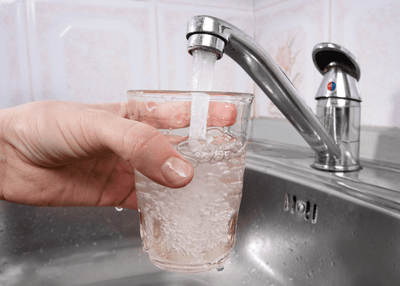
The Good:
Shortly after scientists in the 1800's demonstrated that microorganisms are responsible for many diseases, people began experimenting with ways to disinfect water. Fast forward to 1908, Jersey City began injecting chlorine into the public tap water supply, which marked the beginning of large-scale water disinfection in the United States. Since then, disinfection practices have become commonplace in the developed world, and the spread of waterborne illness through public water supplies has come to a screeching halt. This is a very good thing.
The Bad:
By design, chlorine-based disinfectants (like bleach) cause damage to living things, otherwise they wouldn’t be effective. Of course, chlorine-based compounds don't kill humans at concentrations found in tap water, but there are known side effects of consuming and showering in chlorinated water, including skin,eye & stomach irritation. While the allowable chlorine levels set by EPA are at a level low enough so they don’t cause adverse effects in the majority of people, some people (myself included) are sensitive to chlorine-based chemicals found at concentrations allowed in tap water.In addition to these negative “health based” side effects, there are other “nuisances” caused by chlorine in water. For example, anyone who has spent time in a chlorinated pool or hot tub knows that chlorine-based chemicals can cause hair and clothes to fade (picture below), and a quick Google search reveals plenty of reasons for using purified water for things like watering houseplants, watering gardens, and filling fish tanks.
The Unknown
Here's what we know:- We know that untreated water can transmit waterborne diseases (e.g. dysentery, Cholera, E. coli …)
- We know that disinfecting water with chlorine-based chemicals greatly minimizes this risk.
- We know that the known side effects of chlorine-based disinfectants are minor when compared to the risk of waterborne disease.
However, as is the case with most things, our understanding of water quality is still progressing. A great deal of research is currently focused on a class of chemicals referred to as "disinfection byproducts." Simply put, disinfection byproducts are the chemicals that form in water when chlorine-based disinfectants react with organic matter.
Scientists are still studying the chemistry and toxicology of these compounds, but what we do know suggests that these chemicals may not be great for us over the long term.
Chloramines:
About 25% of municipalities in the US (including Washington, DC) use chloramines (also known as combined chlorine) as the primary public water supply disinfectant. Chloramines are formed by adding ammonia to chlorinated water. Chloramines (like chlorine) is an effective disinfectant, and it's effect is persistent in the distribution system due to its low volatility. However, this persistence makes it so chloramines do not "go away" if you leave an unsealed container in the fridge overnight, so we have to deal with the associated taste and odor.
Chlorine:
DC's tap water switches over to a chlorine disinfection cycle for a few weeks each spring. This more aggressive "spring cleaning" kills any microbial buildup that may have occurred throughout the distribution system. During these few weeks, many DC residents may notice a change in their tap water's taste and odor. Fortunately, because chlorine is more volatile than chloramine, the unpleasant taste/odor is minimized if you let a container of water sit out overnight.
Sources:
https://www.britannica.com/science/microbiology
https://www.epa.gov/ccr
https://www.cdc.gov/safewater/chlorination-byproducts.html
http://water.epa.gov/drink/contaminants/basicinformation/disinfectionbyproducts.cfm
https://www.dcwater.com/DrinkingWaterQualityFAQs
https://www.dcwater.com/whats-going-on/news/spring-cleaning-region%C2%92s-drinking-water-system
Other Great Articles From Water Smarts Magazine:
Fluoride in Municipal Tap Water: What You Need to Know
Lead Contamination in Flint, MI Drinking Water: Why it Could Happen in Your City?
Lead Contamination in Flint, Michigan Drinking Water
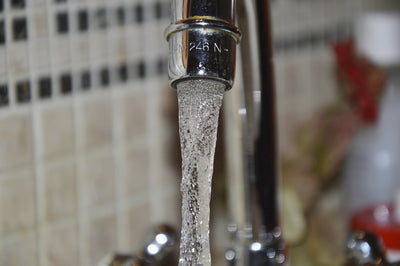
Eric Roy, Ph.D. | Scientific Founder
***11/20/2019: Note from Eric. It’s been recently brought to my attention that the July 16, 2015 date on this article may have been incorrect, and that the correct publication date is October 14, 2015. We’ve changed the date listed on the article to reflect this.***
I wanted to take a make our readers aware of a largely unreported disaster that is underway in Flint, Michigan. The residents of Flint, MI are being poisoned by lead in their tap water because the municipality messed up... big time. In this post, I'll focus on the science behind lead contamination, the facts (as we know them) of what happened in Flint, and touch upon another incident in recent history where a similar thing happened.
All water has impurities in it. Most impurities are harmless (e.g. dissolved oxygen, minerals), some are harmful (e.g. lead, arsenic, mercury).
Impurities typically enter tap water in 3 ways:
- Some are found in the source water (e.g. naturally occurring minerals)
- Some are deliberately added as part of the treatment process (e.g. chlorine)
- Some are picked up along the way from the treatment facility to the tap.
Lead is almost never found in source water at dangerous levels, and nobody deliberately adds lead to their water supply, because it's toxic. Lead can, however, be be introduced to tap water as it flows from the treatment facility to the tap.
How is Flint’s drinking water picking up lead in transit?
It’s pretty straightforward: Nearly all homes with plumbing installed before the 1986 use lead-containing solder to join copper pipes. Lead can also be found in residential plumbing fixtures manufactured before 1998. Additionally, some older homes use lead service line pipes to connect water mains to homes. Proper water quality testing (e.g. pH, chloride, toxic metals) and corrosion control practices (e.g. monitoring chloride levels, maintaining a slightly alkaline pH, adding corrosion inhibitors) are what keep residents with older plumbing and service connections safe from lead contamination. This is not unique to Flint. Unfortunately, it's not always done correctly, and residents suffer.
In Flint, as well as other places where high lead levels have leached into municipal tap water (e.g. Washington, DC in the early 2000’s), monitoring and corrosion control measures failed, which allowed lead to dissolve from pipes/fittings/fixtures and poison the residents.
What changed in Flint to cause the lead contamination problem?
In 2014, Flint stopped buying its tap water from Detroit (which has proper corrosion control measures in place), and began collecting their water from the Flint River as part of a plan to switch to a different water supply. During the changeover process, the municipality failed to implement effective corrosion control measures, and the corrosive water allowed lead to leach from lead-containing plumbing. Because proper water quality monitoring procedures were not in place, the Lead problem was not widely discovered until recently.
What Now?
Flint has announced that it will resume buying water from Detroit, which gets its raw water from Lake Huron and has proper monitoring and corrosion control measures in place. This is a great first step, but it's important that Flint keeps monitoring their water for lead, because the pipes can continue to leach lead while the corrosion control measures build up the protective layer on the inside of the pipes. The length of time this takes will depend on the degree of corrosion, and whether or not Flint's water will have "boosters" of the anti corrosion chemicals.
Until lead levels drop, residents are being urged to use a quality water filtration system that effectively removes lead. Contrary to some of the information out on the internet... boiling water before use does NOT decrease the amount of lead. It is critical that Flint residents use a filter that effectively removes lead, and also changes the cartridges on a regular basis. I would expect that the filtration capacity (in gallons) for lead would be much lower than the manufacturer claims, because the gallon capacity ratings were determined using water with much lower lead concentrations than what is currently being measured in Flint.
Even though there is a plan moving forward, this type of incident almost certainly caused harm to some residents Flint, and the areas most affected by it were probably homes with older plumbing. Even though lead contamination is odorless and tasteless, it has devastating effects on human health. Since Flint began using the Flint River as a water source, numerous children have tested positive for high levels of lead in blood, and a number of schools have recently shut down water fountains due to high lead levels. When a similar lead contamination issue occurred in Washington DC between 2001-2004, stillbirths shot up during the affected years (Edwards, 2013). As was the case in Washington, DC, the full extent of harm likely will not be realized for several years.
Sources:
M. Edwards. Fetal death and reduced birth rates associated with exposure to lead-contaminated drinking water. Environmental Science & Technology. Published online December 9, 2013. doi: 10.1021/es4034952.
Other Articles We Think You Might Enjoy:
Tap Water Chlorination: The Good, The Bad, The Unknown
Fluoride in Municipal Tap Water: What You Need To Know
Disinfection Byproducts: What You Need To Know


